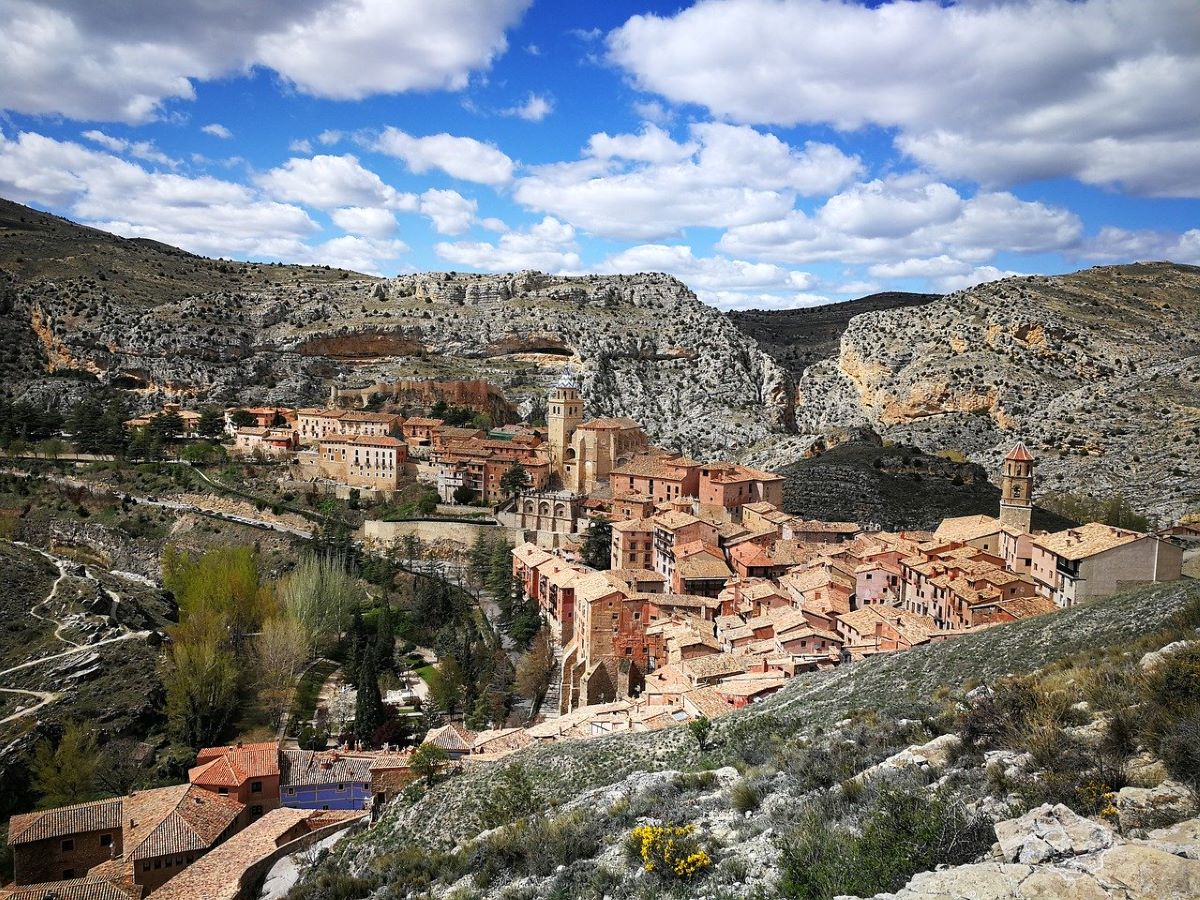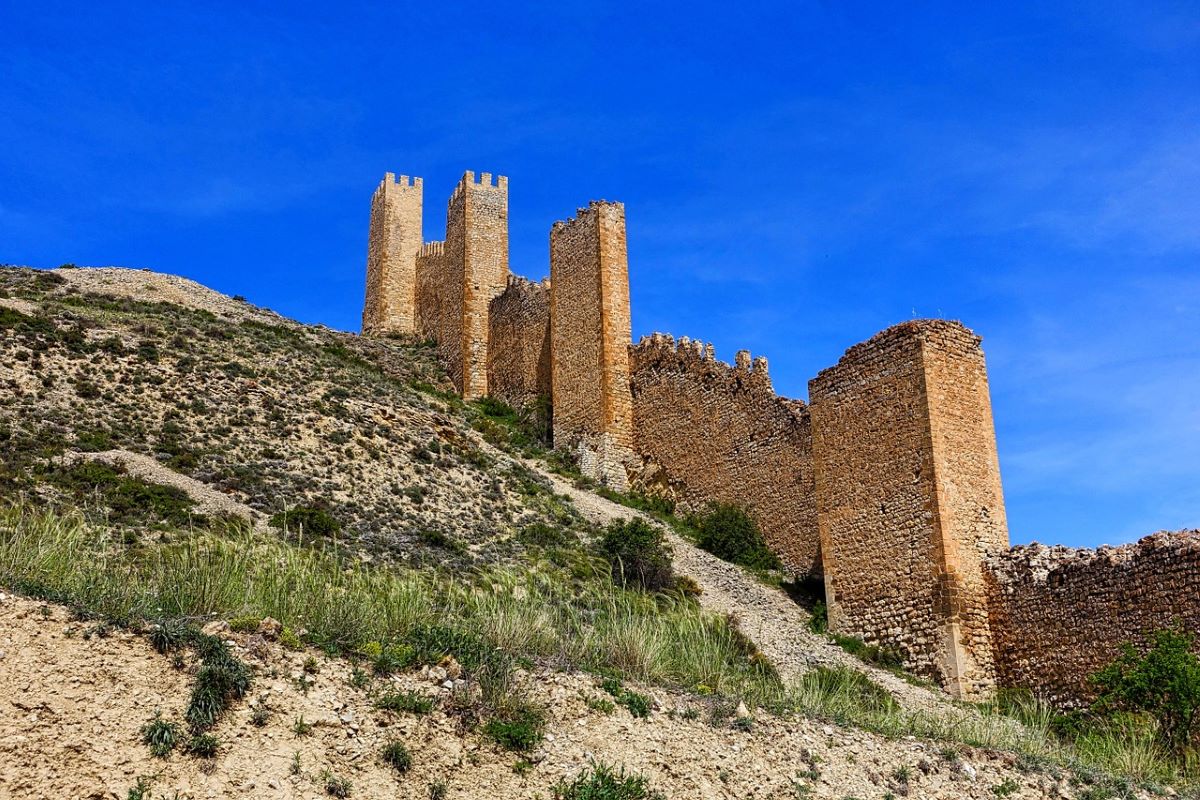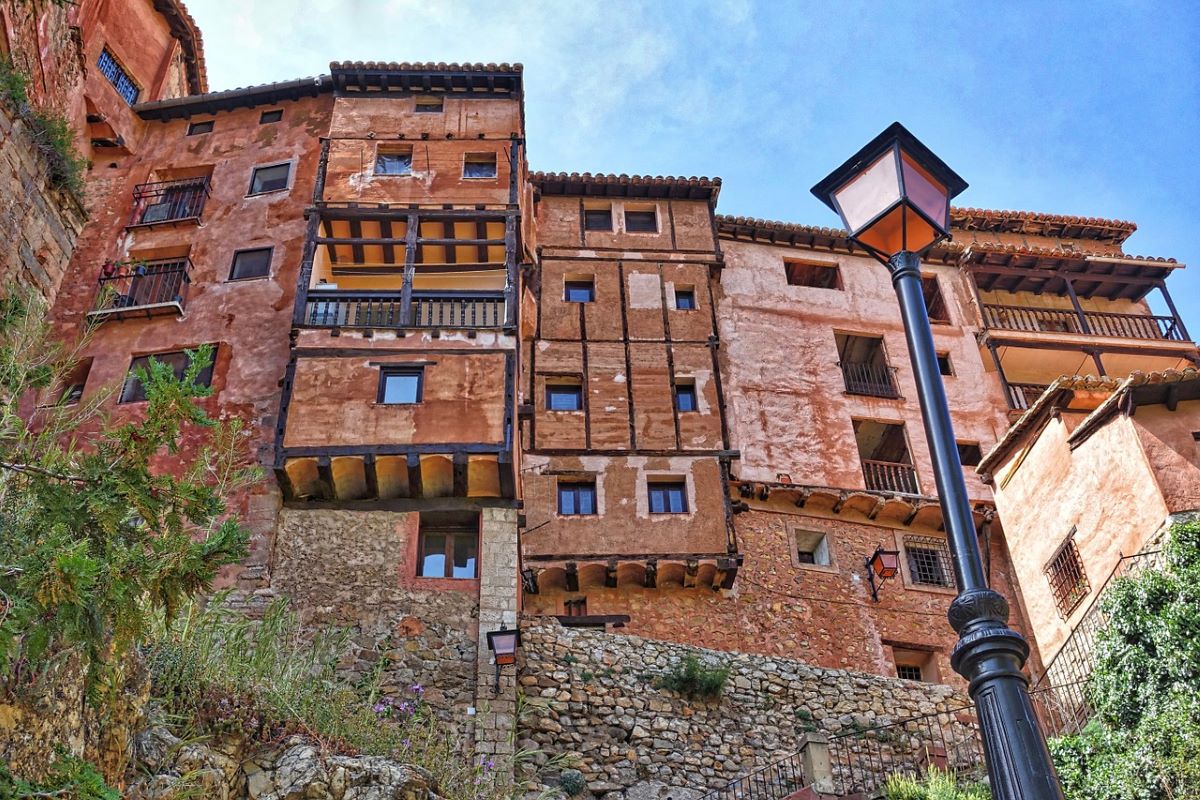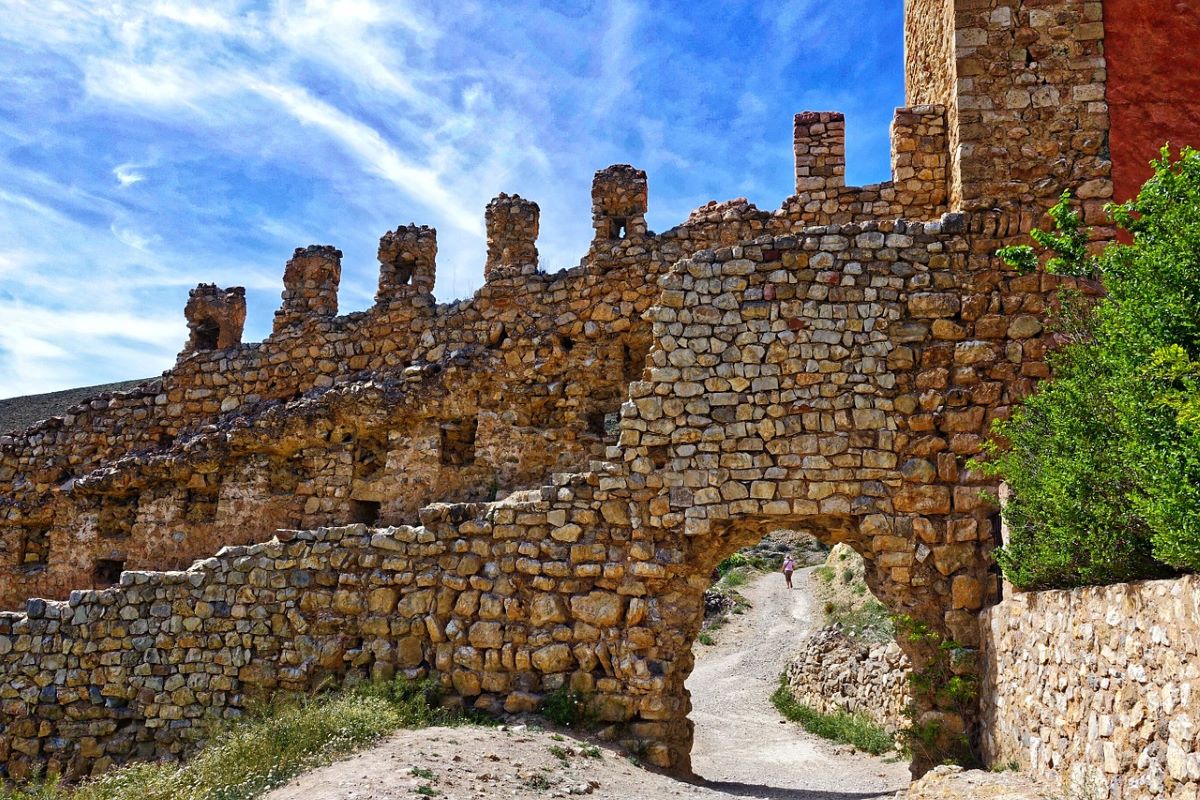
Image | Pixabay
The province of Teruel is one of those territories that make up emptied Spain. A practically unknown place for tourism that nevertheless houses true gems that are worth knowing. Here we find one of the best examples of Mudejar art in the world, which has earned it to be recognized by UNESCO as a World Heritage Site. It is also the cradle of dinosaurs because in the province ten species of these prehistoric reptiles have been discovered in recent years and as if that were not enough, in Teruel is the so-called Spanish Tuscany, specifically in the region of Matarraña.
One of its best-preserved treasures is Albarracín, a medieval town located in the Universal Mountains that is considered the most beautiful town in Spain. You want to know why? Keep reading!
Where is Albarracín?
Albarracín is located on the isthmus and the peninsula that forms the Guadalaviar River. It is surrounded by a deep gash that acts as a defensive moat, complemented by the imposing belt of walls that culminate in the Andador castle. Its location, at an altitude of 1182 meters, and its climate offer a wide range of activities focused especially on outdoor activities such as mountain biking or hiking. In addition, in the surroundings there are a large number of cave paintings just minutes from the main road.
How to get to Albarracín?
This Aragonese town is located just 35 kilometers from Teruel, just half an hour from the capital. Although there is the possibility of going by bus, the car is the best way to explore the city and its surroundings freely.
Origin of Albarracín
From its origins Albarracín has been marked by its location, its potential as a defensive place being decisive. It was born as a small village around the pre-Romanesque church of Santa María. Around the year 965 AD the first defensive enclosure was developed during the Muslim occupation, which included the church of Santa María and the Alcázar.
What to see in Albarracín?

Image | Pixabay
Alcazar and Andador tower
At present, the fortress, located at one end of the town overlooking the Guadalaviar River, only the remains of the basements of the wall and the towers are preserved. On the upper floor was the main residence around a patio, under which a large cistern is located.
The Andador tower, which was originally an albarrana tower, also dates from the late XNUMXth century and was included in the fortified enclosure at the beginning of the XNUMXth century, when the city became the capital of the taifa ruled by the Banu Razin. of Berber origin. The White Tower located next to the Church of Santa María dates from the XNUMXth century. With it the defensive system of the city was completed.
Its defensive importance was lost in the XNUMXth century, when Felipe V abolished the fueros of Aragon and ordered the dismantling of the fortress, although not the walls and the main towers, such as the Andador or Doña Blanca towers.
In the last decades of the 2000th century, rehabilitation works were carried out to recover the west and south walls and by the year XNUMX this complex was declared Assets of Cultural Interest.
The streets of Albarracín

Image | Pixabay
But the charm of Albarracín is above all in the layout of its streets adapted to the difficult topography of the terrain, with stairways and passageways. Every corner, every house is the object of admiration for its doors and knockers, its tiny windows with lace curtains, its continuous balconies in rich wrought iron and carved wood ... The main monument of Albarracín is the city itself, with all its popular flavor and aristocratic, a reflection of its history and the good work of its people.
However, among the stately mansions and popular architecture we can highlight: the Julianeta house, the house on Azagra street, the Community square and the small and evocative Plaza Mayor.
Now, buildings such as the Church of Santa Maria, the Cathedral, the Episcopal Palace deserve a special mention.
Cathedral of El Salvador

Image | Santa María de Albarracín Foundation
The Cathedral of El Salvador was built between 1572 and 1600, on a previous temple in the Romanesque and Mudejar style. We are facing a Renaissance construction with a single nave covered with polychrome ribbed vaults of late Gothic tradition. It has chapels between buttresses and a choir at the foot.
It is supported by baroque pilasters and cornices, which are part of the redecoration that was made in the early XNUMXth century in this cathedral, changing its Gothic appearance to Baroque. In the XNUMXth century the interior was painted gray and with the subsequent restoration of the temple at the beginning of the XNUMXst century this painting has been removed to return the walls to the original color of the XNUMXth century.
The Cathedral of El Salvador has a cloister through which you can access the Episcopal Palace that is next to it. Today this building houses the Diocesan Museum, which houses an important collection of tapestries and goldsmiths.
Episcopal palace
The Diocesan Museum of Albarracín is located on the noble floor of the Episcopal Palace, an XNUMXth century building. It can be visited within a tour organized by the Santa María de Albarracín Foundation, called Albarracín Spaces and Treasures, who is the one who manages the museum.
Within its vast collection we can highlight the goldsmith pieces from the cathedral treasury and the Flemish tapestries made in the Geubels workshop in Brussels, which represent the story of Gideon.
However, you can also visit the rooms of the palace such as the Mayordomia room, the official rooms of the bishop and his private rooms where it is worth highlighting the office, decorated with wall paintings from the XNUMXth century. Other rooms show musical instruments with which the celebrations of the cathedral were accompanied, choral books, Gothic tables and some furniture.
Iglesia de Santa Maria
It is located on the outskirts of the city, in what was once the nucleus of the population. The original temple was a Visigothic church that was part of the defensive system of the city, that is to say, of the walls, but a fire that occurred in the XNUMXth century caused serious damage, so the current XNUMXth century church with a single nave covered with a ribbed vault came to replace it. In the XNUMXth century the church of Santa María was the church of the Dominican convent, which has now disappeared.
Its exterior is in the Mudejar style, which is not appreciated in its interior where the profuse decoration of plaster high reliefs that the church and the Albarracín community offers stands out. It has numerous altarpieces of great importance, although the most significant is that of the main altar dating from the XNUMXth century.

Image | Pixabay
Route to the Walls of Albarracín
A visit to Albarracín is not complete without knowing the walls that surround it and that are part of the historical-monumental complex of the municipality. There are three ways to get there: by the Chorro street, by the ascent to the Torres from the Santiago church and by the Molina portal. During the tour you have to climb some good slopes, so it is advisable to wear comfortable shoes and some water.